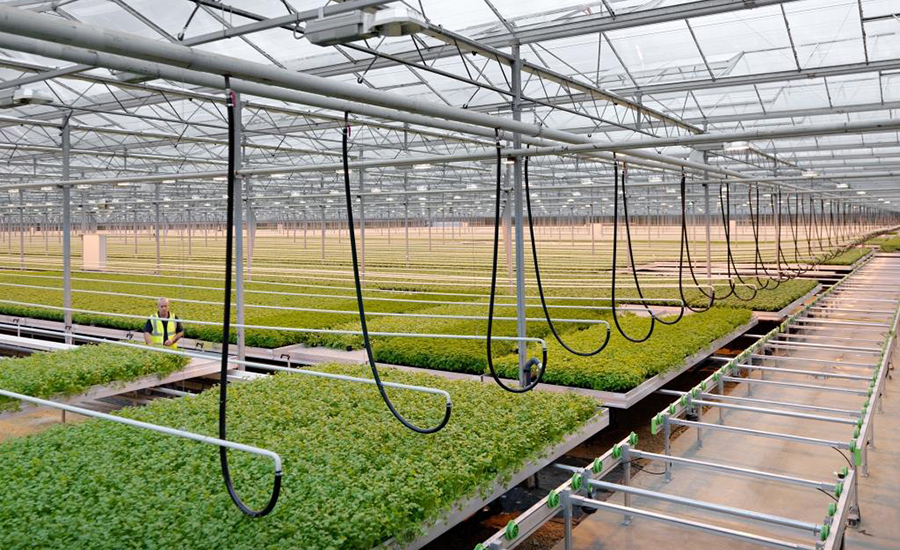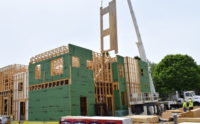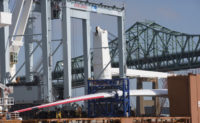The legalization of marijuana in more than half the states is driving demand for high-tech cannabis grow facilities, but opportunities come with challenges in the embryonic industry.
"Cannabis is being grown at a scale never seen before," says Nathan Mendel, owner of Your Green Contractor, a subsidiary of Mendel and Co. Construction. "For projects in tens of thousands of square feet or acres, a different level of sophistication and automation is needed for irrigation, fertigation and lighting control systems that growers are learning as they go," Mendel says, adding, "Making sure you incorporate as much of that into the design as early as possible is one of the challenges."
Twenty-eight states and the District of Columbia have made marijuana legal, though federal law still bans it; eight of those states have legalized recreational marijuana, and the remaining 20 are strictly medical.
Hot spots for cannabis grow facilities include the Northeast and the West Coast, says Zev Ilovitz, president, Envirotech Greenhouse Cultivation Solutions. "We’re seeing a lot of demand in Nevada and Florida, where new seeds are coming on line," he observes. Other states granting more licenses include Arkansas, Georgia, New Jersey, Ohio and California.
Poised to be the world’s largest adult-use cannabis market, California won’t have a regulated cannabis business until 2018, so many projects are waiting in the wings. "We’re talking to at least six owners with projects in design, but currently have nothing under construction in California," Mendel says.
Types of Grow Facilities
In addition to converting warehouses, which are common, growers are building indoor grow facilities that typically rely on artificial lighting or greenhouses that take advantage of solar energy.
Cannabis greenhouses are similar to agricultural greenhouses, "but they need to comply with building codes to ensure structural viability, safety and visual appeal," says David Laverty, director of specialty markets for Nexus Greenhouse Systems. The sophistication of a cannabis grow facility is in the high-tech growing equipment, such as radiant-floor and forced-air heating, mechanical cooling, irrigation and fertilizer systems, odor mitigation, and environmental controls, which work together in one integrated growing system.
Every grower has his or her own cultivation methods that, in turn, impact facility design, says Sam Andras, architect and senior principle at MJ12 Design Studios. These methods include reverse osmosis for purifying water, water-recovery systems, facility-wide fertigation versus room-by-room distribution, and LED (light-emitting diodes) versus HPS (high-pressure sodium) lighting, he says.
Breaking ground on Aug. 7 in McMinnville, Ore., a $2-million project now is in demo for the Willamette Haze project, a 17,000-sq-ft indoor facility with a steel mezzanine in an existing building. "What’s fun is that it will include a grow facility, an extraction facility and an edibles kitchen all under one roof," Mendel says.
During the pre-application conference for Williamette Haze, one of the biggest challenges was to convince the city that the cannabis-extraction lab was not a hazardous occupancy and it will not be over the allowable code quantities for hazardous substances, says Darcey Wenzel, project architect at MJ12.
"There are different types of extraction facilities, including those that use butane or CO2. Each comes with its own issues, depending on the quantities used on the property," Wenzel says. "It was an education process, and they [McMinnville agencies] were open to us educating them."
Sustainable Grow Operation
In Debeque, Colo., organic cannabis operation District 8 is building a sustainable recreational grow facility on 53 acres near the Colorado River. "We were among the first to realize the future of cannabis would be in greenhouses that provide substantial cost savings by using solar energy to grow plants versus the electric grid," says Trevor Taylor, D8 chief operating officer.
The 240,000-sq-ft project broke ground in December 2015; to date, 33,000 sq ft of warehouses and greenhouses are complete, with full completion scheduled for 2020.
"Our building is a high-tech greenhouse, controlled by many different parameters within the building that report back to a Wadsworth [Seed] Control System, which opens and closes shutters and curtains to let sunlight in or block it out, and it changes the humidity and temperature," Taylor says. The system has a touch-screen interface and can graph data from sensors, including sunlight, temperature, humidity and mechanical equipment for heating, ventilation or irrigation.
In past years, cannabis was grown mostly in open-air greenhouses with lots of insect contaminants, Taylor says. "We engineered an internal ecosystem so all of our air ducts and supplied air are bug-trapped and netted, but we still have the ability to use the sun," he says. "Then, we enclosed all of our air intakes, put them internal to the building, and used screens and netting to keep dirt and dust particulates out. Screens open and close as the building demands."
In Prince George’s County, Md., general contractor Willco Construction has completed construction of Holistic Industries’ $14-million, 30,000-sq-ft indoor facility for growing medical marijuana for children with severe forms of epilepsy. The project began last November and was completed on schedule in August.
Designed by Morgan Gick, architect at MGMA, the shell is a two-story concrete tilt-and-steel structure warehouse. "The interior is designed for maximum production … using a mobile [Dutch] KG benching system that Envirotech helped us design," says Mike Kupferman, Holistic Industries chief cultivation officer. Interior walls are constructed of steel studs with mold-resistant gypsum.
The Envirotech benching system involves a factory-like conveyor that allows growers to move plants easily and efficiently from the early planting staging area to the vegetative area, the flower area and, finally, the area where the plants are harvested and sanitized before replanting, Ilovitz explains.
To save energy, the team installed a completely recirculating fertigation system that allows for reuse of all nutrients and captures all condensate water, Kupferman says. Plans are also in place to install solar panels on the roof.
The schedule was tough and required "a rapid buy-out of the trades so that material and equipment procurement could move forward," Kupferman says. "Even with over 20 weather days, we still completed [the project] on time."






Post a comment to this article
Report Abusive Comment